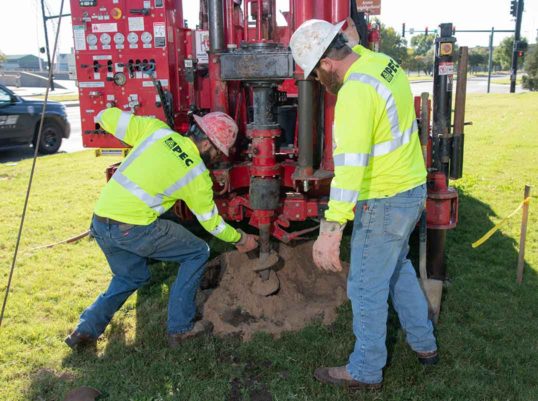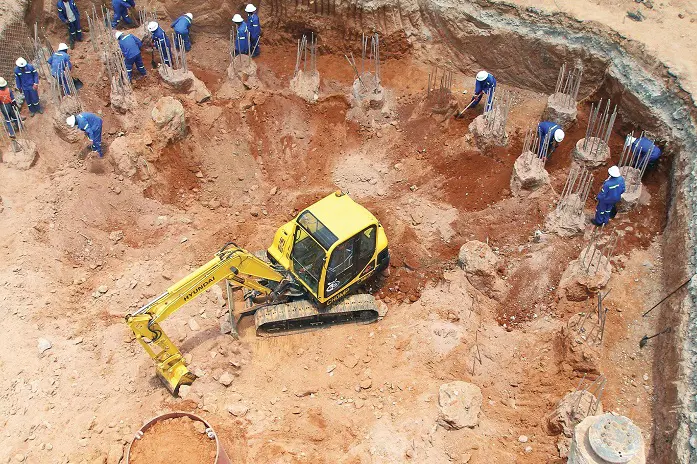Just How Consulting Civil Engineering Firms Add To Effective Project Management and Design Implementation
Consulting civil engineering companies are indispensable to the success of building tasks, combining technical efficiency with strategic oversight. By concentrating on style optimization and threat reduction, these companies make certain that projects are not just viable however likewise sustainable and cost-efficient.
Function of Civil Engineers
Recognizing the role of civil engineers is vital for the successful monitoring of building projects. Civil designers offer as the backbone of framework development, making certain that tasks are designed and implemented to satisfy capability, sustainability, and safety and security standards. Their knowledge includes different elements of engineering, consisting of structural, environmental, and geotechnical specialties.
Civil engineers are accountable for performing feasibility studies, which analyze the viability of suggested projects by evaluating financial, technological, and environmental variables. They establish comprehensive plans and specs, incorporating innovative remedies to optimize products and sources. Throughout the building stage, civil designers look after the job, collaborating with engineers, stakeholders, and specialists to make certain adherence to make specifications and governing needs.

Job Preparation Methods
Reliable project planning techniques are important for guaranteeing that building jobs are performed efficiently and successfully. Consulting civil design companies play a critical duty in this procedure by utilizing extensive planning methods that address various task stages. At first, a complete analysis of job scope and client needs is carried out, permitting the identification of critical landmarks and deliverables.
In addition, these companies use tools such as Gantt graphes and job management software program to develop in-depth timelines, allowing effective organizing of tasks and source allowance. This structured approach aids to anticipate possible bottlenecks and allocate essential resources proactively. Danger monitoring is another essential part; companies perform danger assessments to recognize potential concerns that might arise throughout the project's lifecycle, implementing reduction strategies to decrease disruptions.
Furthermore, stakeholder involvement is emphasized throughout the preparation stage. Regular communication with clients, professionals, and regional authorities ensures that all parties are lined up with job objectives and timelines. By integrating these techniques, consulting civil engineering firms improve the probability of task success, ensuring adherence to budget plan restrictions and governing needs while cultivating a joint environment.
Design Optimization Methods
Style optimization strategies are essential for enhancing the efficiency and sustainability of civil engineering tasks. These methods entail the organized evaluation of design parameters to achieve the very best possible outcomes while reducing expenses and source usage. By making use of innovative computational devices and algorithms, engineers can analyze different design choices and choose the most efficient alternatives based upon specific project requirements.
One commonly utilized strategy is parametric style, which permits the adjustment of layout variables to observe their impact on general job performance. This repetitive procedure causes ingenious solutions that not just satisfy functional requirements yet likewise comply with ecological requirements. Additionally, techniques such as worth engineering concentrate on maximizing job elements to make the most of worth while minimizing unneeded costs.
Furthermore, the assimilation of Structure Info Modeling (BIM) helps with far better partnership among stakeholders, allowing real-time adjustments and improvements to styles. This holistic sight fosters a detailed understanding of the project, bring about informed decision-making. Inevitably, reliable design optimization strategies result in enhanced project timelines, minimized waste, and boosted structural performance, adding to the overall success of civil engineering undertakings.
Risk Monitoring Approaches
Danger administration approaches are important in ensuring the effective distribution of civil engineering jobs, as they aid recognize, evaluate, and alleviate possible risks that can influence project results. Effective threat monitoring is a systematic procedure that entails the identification of dangers, evaluation of their possibility and impact, and the advancement of approaches to resolve them.
Consulting civil engineering firms typically employ a combination of qualitative and quantitative threat assessment techniques (geotechnical engineering companies in south visit this website africa). Qualitative techniques, such as conceptualizing sessions and professional meetings, assistance gather understandings on possible you can try here threats from various stakeholders. Conversely, quantitative techniques include statistical analysis and modeling to figure out the likelihood and possible influence of recognized threats
As soon as threats are assessed, firms implement reduction approaches, which might consist of threat evasion, decrease, approval, or transfer. This might include redesigning task parts to remove risks or securing insurance to offset possible financial losses. Continuous surveillance and evaluation of dangers throughout the project lifecycle are additionally crucial, permitting for prompt modifications to run the risk of monitoring techniques as brand-new hazards emerge.
Collaborative Communication Practices
Enhancing task outcomes with collaborative interaction methods is vital for speaking with civil engineering firms. Reliable communication cultivates a culture of transparency and depend on among stakeholders, which is vital for the successful implementation of engineering tasks. By carrying out organized communication networks, firms can guarantee that all events-- clients, contractors, and staff member-- are lined up on project timelines, go to these guys deliverables, and goals.
Routine conferences, both informal and official, facilitate the exchange of ideas and responses, permitting real-time analytic and decision-making. Utilizing collective tools such as task monitoring software urges documentation and tracking of progression, while making it possible for immediate accessibility to essential information.
In addition, active listening and open dialogue are vital elements in a collective setting. By valuing varied perspectives, companies can introduce and adjust styles that satisfy both technological requirements and client expectations. Furthermore, cultivating a team-oriented atmosphere reduces misunderstandings and raises the overall high quality of work.

Verdict
In verdict, seeking advice from civil engineering firms are integral to effective job administration and design execution. By using calculated preparation, style optimization, and efficient risk monitoring, these companies enhance task effectiveness and sustainability. Their commitment to joint interaction further makes certain stakeholder positioning and fosters a participating atmosphere. Inevitably, the expertise and techniques used by consulting civil designers considerably contribute to accomplishing project goals while maximizing and lessening costs source utilization.

In conclusion, getting in touch with civil engineering firms are important to successful project administration and layout application.